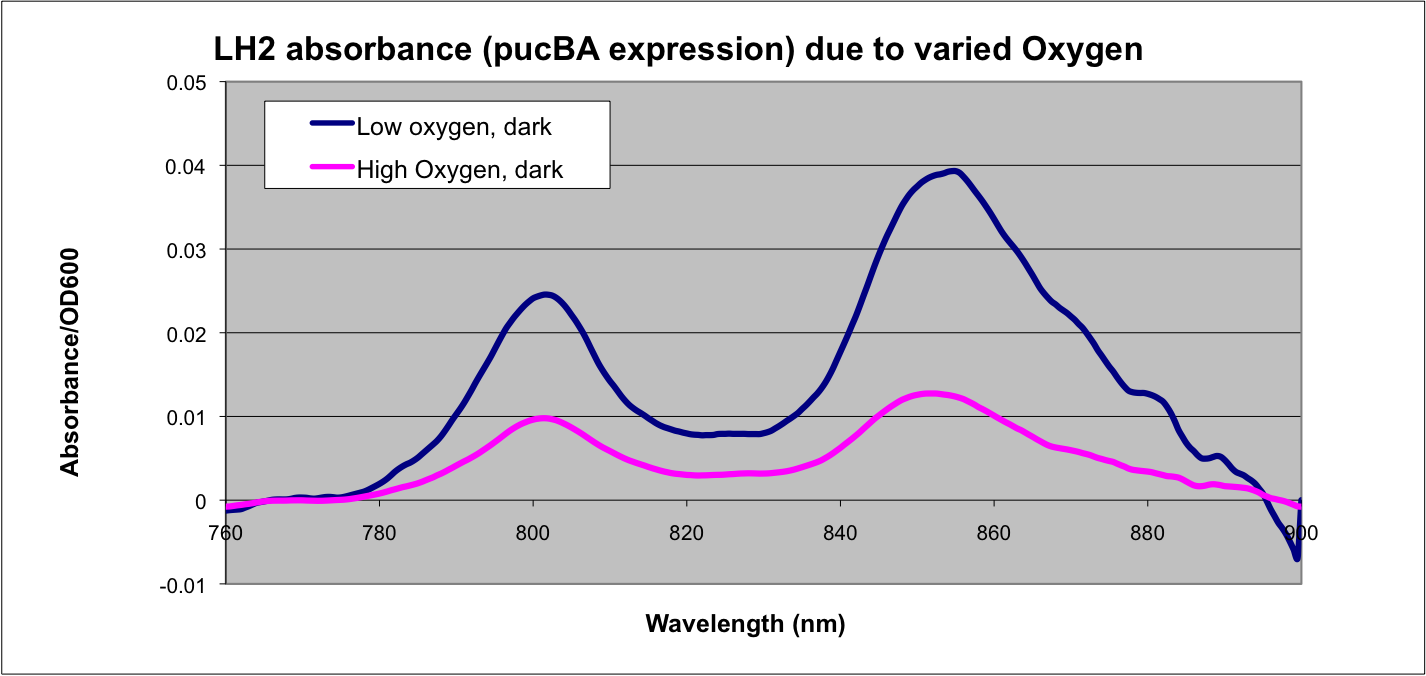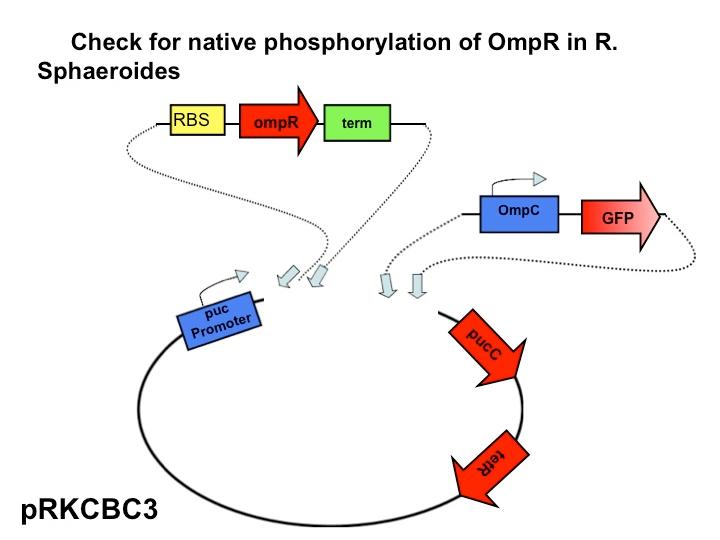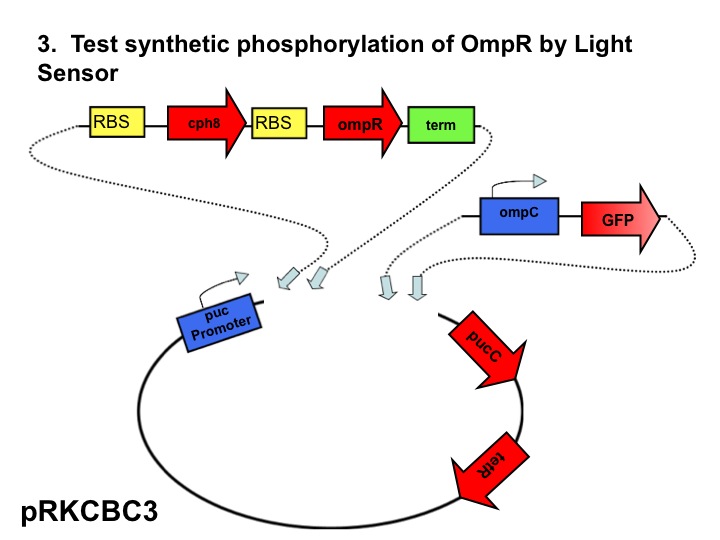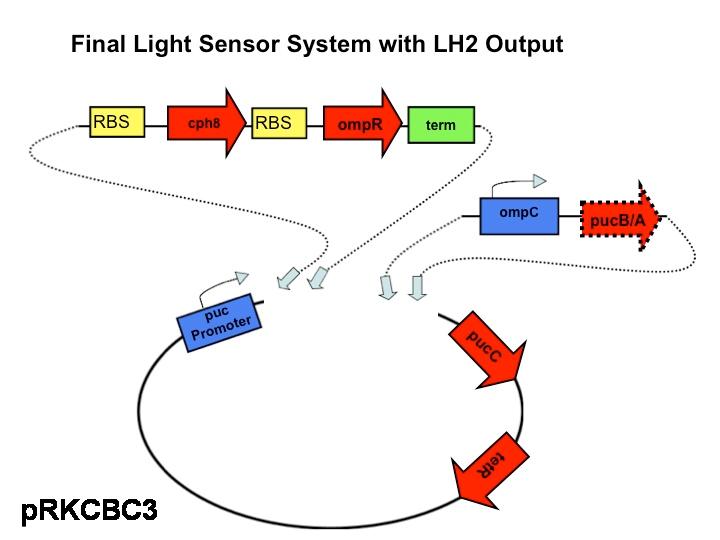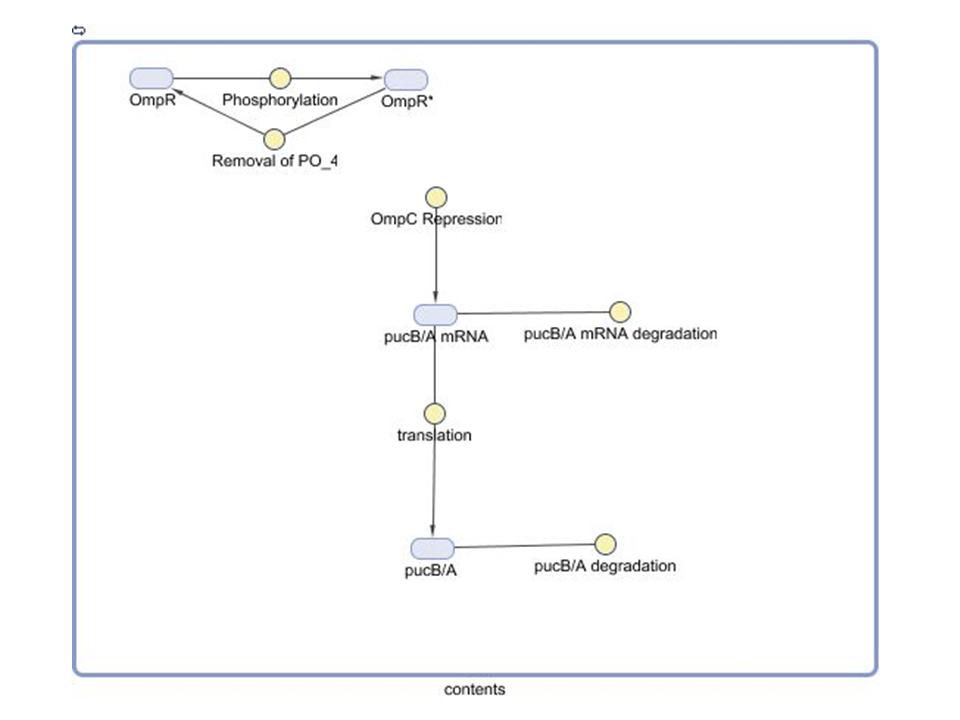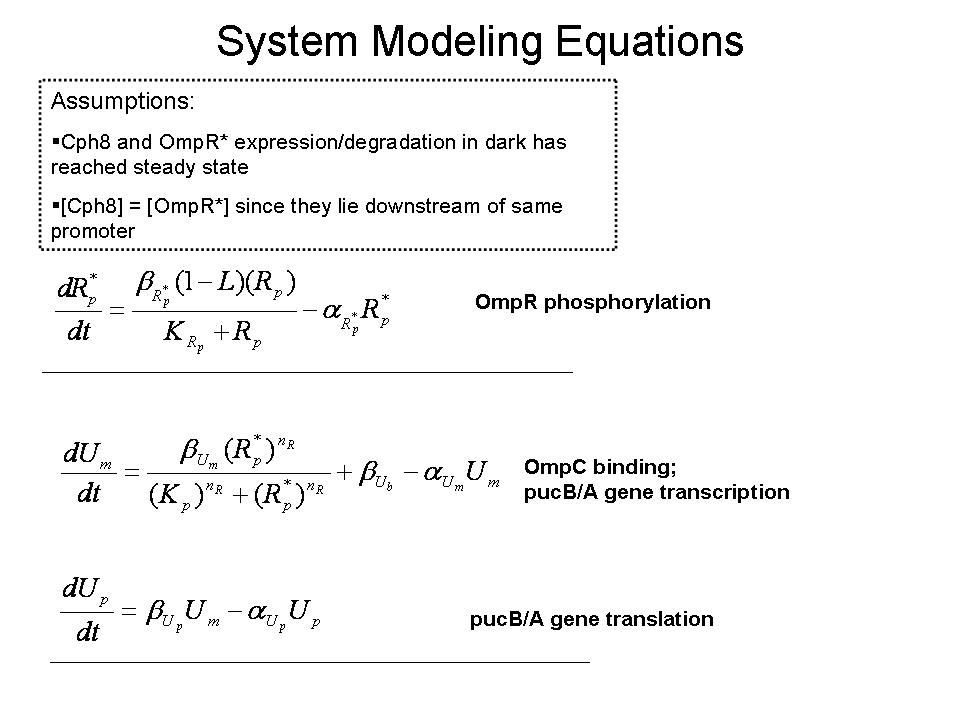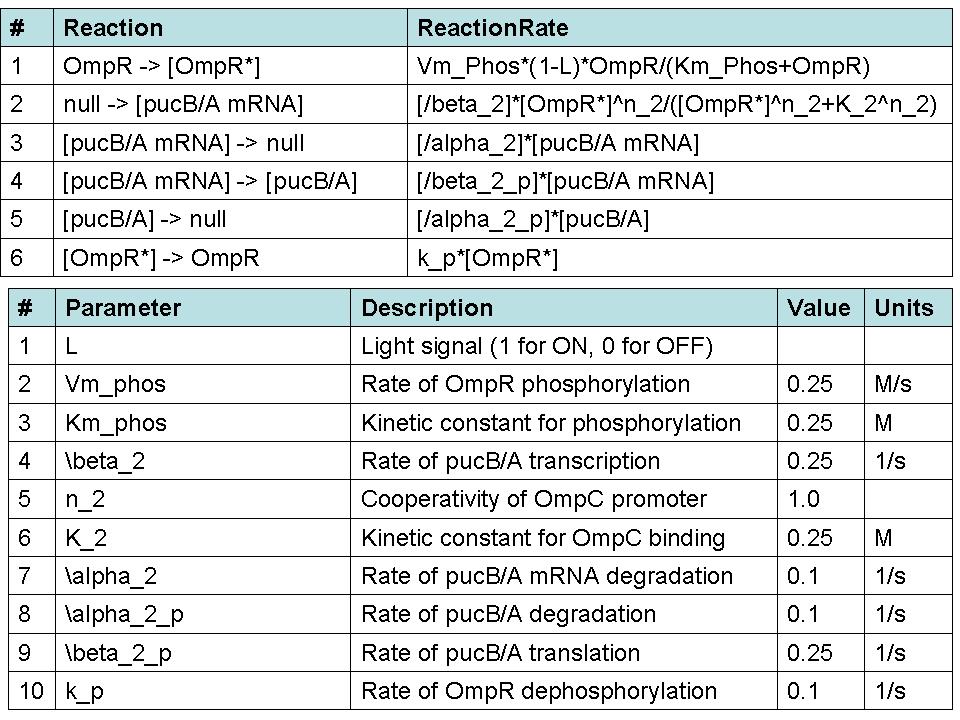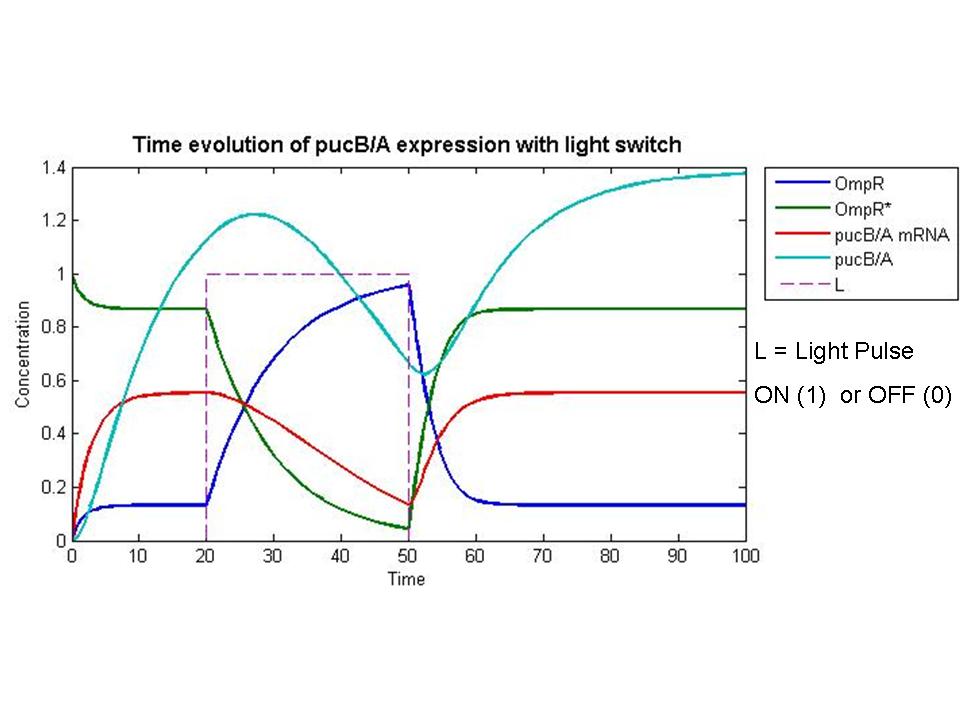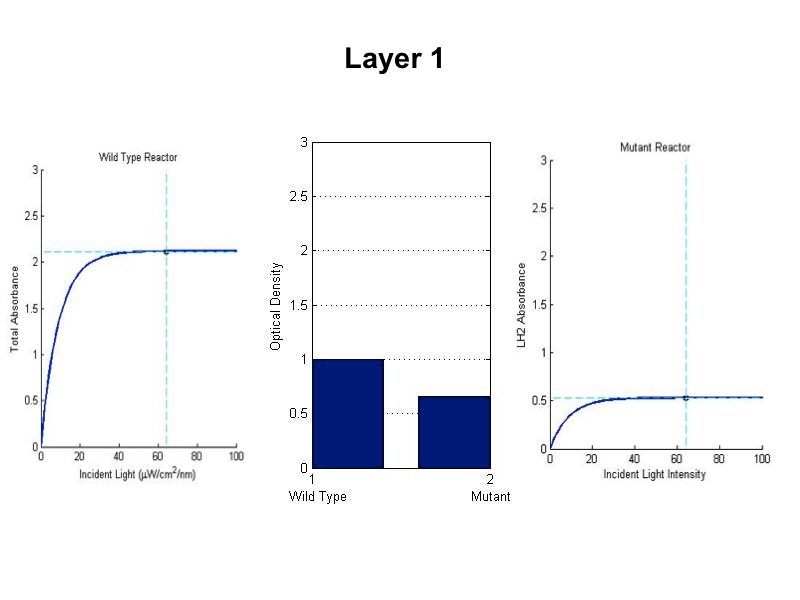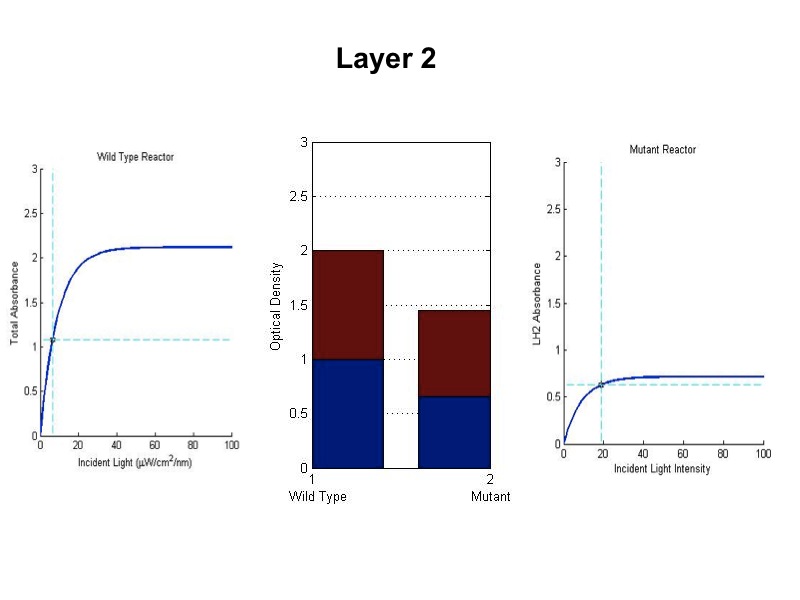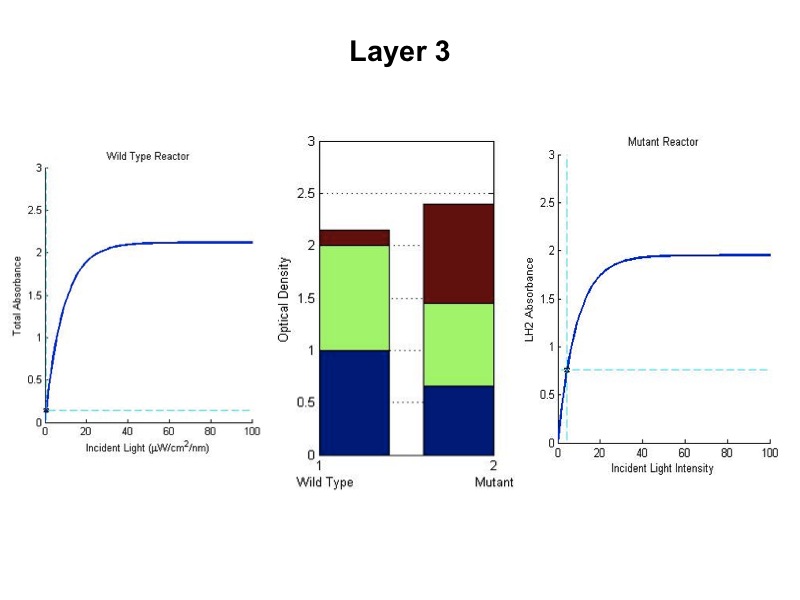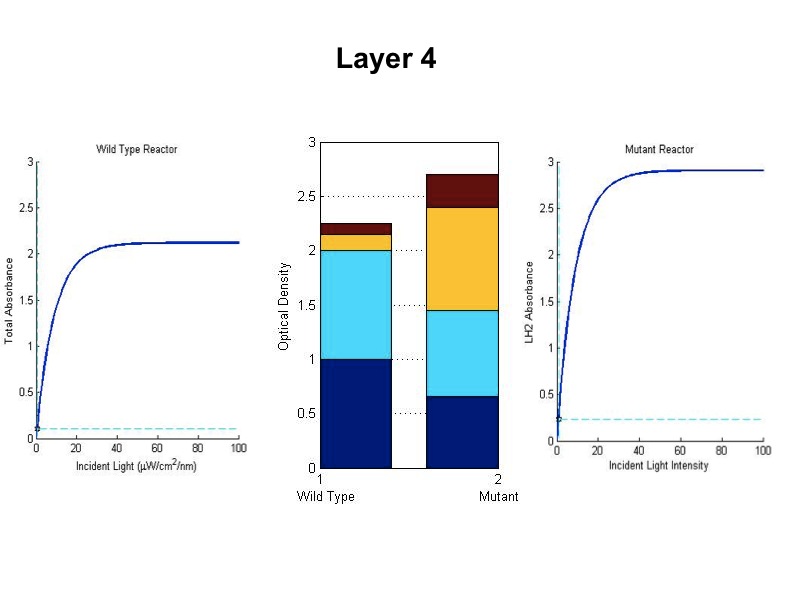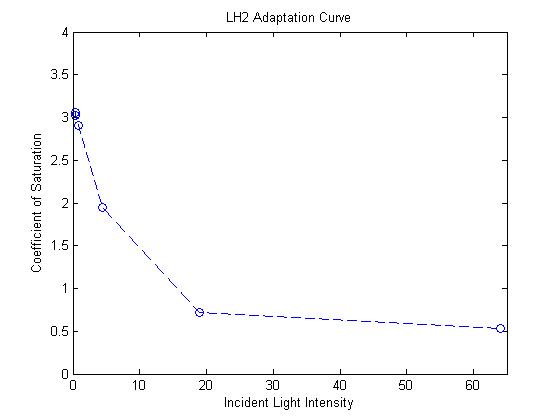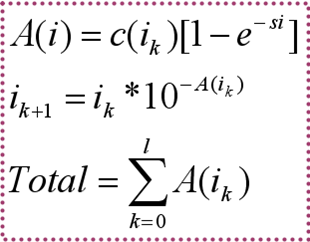Team:Wash U/Biological Parts
From 2009.igem.org
(→Simulating a Bioreactor) |
|||
| Line 282: | Line 282: | ||
[https://2009.igem.org/Team:Wash_U/Biological_Parts Back To Top]<font size="4"> | [https://2009.igem.org/Team:Wash_U/Biological_Parts Back To Top]<font size="4"> | ||
| - | == '''Characterization''' == | + | =='''Characterization'''== |
<font size="2"> <br> | <font size="2"> <br> | ||
[[Image:Slide1.jpg|480px|left]] The first part of our characterization of our system begins with the puc promoter, which promotes transcription of the LH2 pucB/A genes naturally in ''Rhodobacter sphaeroides''. It is important that we are able to compare the transcription rate of the puc promoter in the natural system vs. our mutant system so that we can determine exactly how much efficiency is gained by adding a red light sensor. The absorption spectra of a DBCOmega mutant (LH2 deficient) transformed with pRKCBC3 containing the puc promoter and pucB/A genes will allow us to characterize the puc promoter under high and low oxygen conditions. | [[Image:Slide1.jpg|480px|left]] The first part of our characterization of our system begins with the puc promoter, which promotes transcription of the LH2 pucB/A genes naturally in ''Rhodobacter sphaeroides''. It is important that we are able to compare the transcription rate of the puc promoter in the natural system vs. our mutant system so that we can determine exactly how much efficiency is gained by adding a red light sensor. The absorption spectra of a DBCOmega mutant (LH2 deficient) transformed with pRKCBC3 containing the puc promoter and pucB/A genes will allow us to characterize the puc promoter under high and low oxygen conditions. | ||
| Line 298: | Line 298: | ||
See: Braatsch et al. 2002 | See: Braatsch et al. 2002 | ||
| - | == '''Future Characterization''' == | + | =='''Future Characterization'''== |
<br>[[Image:Slidex.jpg|480px|left]] The next step in our characterization of our synthetic red light response system is to analyze changes in phosphorylation of ompR in ''Rhodobacter sphaeroides''. In our final system, we only want puc genes to be transcribed and expressed via halting the autophosphorylation of ompR, not simply the puc promoter as it naturally occurs. By placing the ompR coding region downstream of the red light sensor and upstream of a terminator our modified system controls expression of the puc genes by the red light sensor. It should be impossible for the puc promoter to directly cause the transcription of puc genes due to the terminator, but instead, transcription of the puc genes must be activated via decreasing the presence of phosphorylated ompR. The end target of ompR transcription is the ompC promoter, located directly upstream of the puc genes. Placing GFP on the ompC transcript will show how often the promoter is transcribed and how often ompR is phoshorylated. | <br>[[Image:Slidex.jpg|480px|left]] The next step in our characterization of our synthetic red light response system is to analyze changes in phosphorylation of ompR in ''Rhodobacter sphaeroides''. In our final system, we only want puc genes to be transcribed and expressed via halting the autophosphorylation of ompR, not simply the puc promoter as it naturally occurs. By placing the ompR coding region downstream of the red light sensor and upstream of a terminator our modified system controls expression of the puc genes by the red light sensor. It should be impossible for the puc promoter to directly cause the transcription of puc genes due to the terminator, but instead, transcription of the puc genes must be activated via decreasing the presence of phosphorylated ompR. The end target of ompR transcription is the ompC promoter, located directly upstream of the puc genes. Placing GFP on the ompC transcript will show how often the promoter is transcribed and how often ompR is phoshorylated. | ||
<br><br><br><br><br><br><br><br><br>[[Image:Slidey.jpg|480px|left]] Part three of our characterization measures the effectiveness of the red light sensor in downregulating the phosphorylation of ompR. This setup is identical to that of part two except we have introduced the red light sensor. Now, the rate of ompR autophosphorylation will be halted by binding to a domain on the light-activated EnvZ kinase analogue. GFP is still attached to the end product, the ompC promoter. By comparing the fluorescence of GFP in this scenario compared with the second scenario the decrease in rate of phosphorylation should be apparent due to the activity of the red light sensor. | <br><br><br><br><br><br><br><br><br>[[Image:Slidey.jpg|480px|left]] Part three of our characterization measures the effectiveness of the red light sensor in downregulating the phosphorylation of ompR. This setup is identical to that of part two except we have introduced the red light sensor. Now, the rate of ompR autophosphorylation will be halted by binding to a domain on the light-activated EnvZ kinase analogue. GFP is still attached to the end product, the ompC promoter. By comparing the fluorescence of GFP in this scenario compared with the second scenario the decrease in rate of phosphorylation should be apparent due to the activity of the red light sensor. | ||
| Line 333: | Line 333: | ||
<br> | <br> | ||
<br><br><br> | <br><br><br> | ||
| - | == | + | =='''Simulating a Bioreactor'''== |
<font size="2"> | <font size="2"> | ||
'''Problem:''' In a typical reactor, cells at the surface absorb more than enough light to saturate their photosynthetic apparatus, transmitting less energy to deeper layers. For wild type cells, the “saturation curve” is approximately the same for all cells, regardless of their incident light intensity.<br> | '''Problem:''' In a typical reactor, cells at the surface absorb more than enough light to saturate their photosynthetic apparatus, transmitting less energy to deeper layers. For wild type cells, the “saturation curve” is approximately the same for all cells, regardless of their incident light intensity.<br> | ||
| Line 356: | Line 356: | ||
type here | type here | ||
<br><br><br> | <br><br><br> | ||
| - | [[image:lh2adaption.jpg|300px|title?]] | + | [[image:lh2adaption.jpg|300px|title?]][[image:simulationequations.png|right|150px|Simulation equations]] |
-Saturation curve: Absorbance as a function of incident light intensity. The coefficient changes with intensity in the mutant only. | -Saturation curve: Absorbance as a function of incident light intensity. The coefficient changes with intensity in the mutant only. | ||
[[image:simulationequations.png|right|150px|Simulation equations]] | [[image:simulationequations.png|right|150px|Simulation equations]] | ||
Revision as of 22:02, 21 October 2009

 "
"

